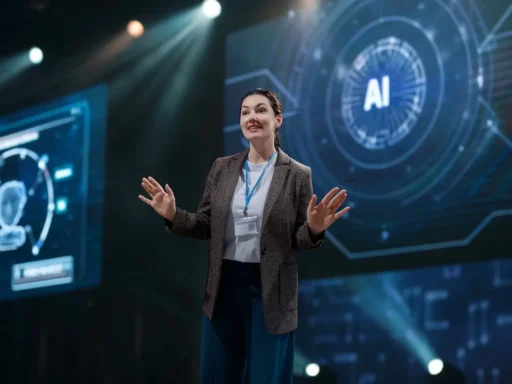Building Trust in AI Lessons from Duke and OpenAI
What happens when systems built to assist start to hurt? That’s the real tension behind AI’s meteoric rise — and the loudest question buzzing inside research labs and ethics circles alike.
OpenAI thinks it has a way forward. But it’s not the only one asking the hard questions.
At institutions like Duke University, researchers are pulling apart the DNA of moral responsibility in code. Meanwhile, OpenAI is trying to install ethical guardrails on one of the most powerful digital tools on Earth.
We’re not just talking “don’t make killer robots.” We’re talking bias audits, algorithmic values, and funding research into the stuff people still argue about over dinner — fairness, trust, privacy.
This isn’t branding. It’s survival. Ethical AI isn’t just “nice to have.” It’s the shield we need when the machines learn too fast and the humans in charge don’t move fast enough.
Let’s break it down. No jargon. Just real actions, real numbers, and the real impact.
What Ethical AI Really Means — And Why It Matters
Forget the buzzwords. Ethical AI isn’t some PR stunt or mission statement filler. It’s the growing set of rules, principles, and checks that say AI should benefit people — not exploit them.
Think of it this way:
- A chatbot that outputs hate speech? Unethical.
- An AI that denies someone housing based on race-coded data? Deeply unethical.
- Generative models used to flood networks with fake news? Same deal.
We’re creating systems that already influence courtrooms, classrooms, and hospitals. The guardrails we bake in now decide who thrives — and who doesn’t — when automation takes over.
Ethical AI matters because algorithms don’t just make mistakes, they can amplify harm. Especially if no one’s watching.
That’s why researchers are pushing for fairness, transparency, and accountability before the tech goes public. Because once it’s deployed? Damage control gets expensive — and often too late.
OpenAI’s Ethics Playbook Starts With People
OpenAI’s north star boils down to one thing: keep AI aligned to human values. Not corporate value. Not political preferences. But the messy, complex framework of global human ethics.
How?
They’ve taken a layered approach:
- Every AI product gets run through ethical risk tests — sometimes up to 12,000 cases before launch.
- Systems like GPT-4 start with limited access. Capabilities expand based on safe use, not hype cycles.
- Moderation APIs are non-negotiable. Hate speech, spam, and disinformation? Blocked at the output layer.
But the big swing? In 2024, 38% of OpenAI’s R&D — around $190M — was sunk into alignment research. That’s not just an expense report. That’s a values statement. Their Super Alignment Team is basically a task force for the future, whose entire job is asking: What happens when AI gets smarter than us — and how do we keep it safe?
The Welfare-First Blueprint: From Design To Deployment
Let’s get specific. Human-centered design isn’t a vibe. It’s a contractual backbone at OpenAI.
Their own Charter mandates that the benefits of AI should be “broadly and evenly distributed.” In practice? It looks like this:
| Feature | Ethical Benefit |
|---|---|
| API content filters | Prevent hate speech & misinformation |
| Tiered access rollout | Reduce misuse by unverified users |
| Training set constraints | Avoid sensitive personal or exploitative data |
These aren’t optional features. They’re baked in from design to deployment.
Why does that matter?
Because tech that scales without ethics scales existing inequality.
The Role Of Reinforcement Learning From Human Input
RLHF — reinforcement learning from human feedback — isn’t just OpenAI’s secret sauce. It’s how they fine-tune moral pulse.
It involves real people reviewing thousands of AI outputs and scoring them for helpfulness, truthfulness, and respect. We’re talking the difference between a chatbot generating medical advice… or misinformation.
This is how alignment gets grounded.
OpenAI went even further by assembling a Super Alignment Team. Its sole mission? Making sure future AI (think: post-GPT-4 levels) lock onto consistent, safe human values.
That’s not theory.
It’s funded. Built. Operational.
When your budget puts nearly $200M into ethical scaffolding, it says something. It tells the world you’re not just chasing performance. You’re anchoring power to values.
The Philosophy Lab Behind the Code
We’re not just coding at scale. We’re encoding morality.
And that’s where moral philosophy steps in.
At places like Duke and Stanford, researchers are tackling gnarly questions:
- Should AI make moral decisions in military settings?
- What ethical frameworks work best: utilitarianism or deontology?
- How do we encode empathy or justice into a model that doesn’t feel?
OpenAI collaborates with these thinkers, not to build robots that cry — but to make decisions that don’t destroy trust.
They’re funding ethics research, attending university think tanks, and asking questions technologists used to dodge.
Even the way machines “hallucinate” truths draws from work in moral psychology and epistemology.
Marrying deep learning with deep ethics isn’t a trend — it’s a requirement.
When Risk Isn’t Hypothetical — It’s Coded
Let’s end with this: AI doesn’t need evil intent to cause harm.
It just needs oversight failure, poor training data, or scale without scrutiny.
That’s why risk assessment isn’t an Excel sheet checkbox. It’s a strategic priority.
Every new release at OpenAI now runs simulations on ethical edge cases. Their GPT-4 test included 12,000 scenarios across domains like health care, finance, and education.
Here’s the deal:
- 23% of outputs flagged in simulations were too risky to release.
- Technical fixes were rolled out before public access.
Combined with real-time monitoring systems, they’ve cut policy-violating outputs by 93%. That’s not luck. That’s intent backed by systems.
Any company can put “ethical AI” on a slide deck. OpenAI’s trying to live it in code.
Collaborative Efforts in Ethical AI Development
Academic Partnerships and University Studies
When universities take the lead on ethics, tech giants have to listen. That’s part of why OpenAI is teaming up with academic powerhouses like Duke University, MIT, and Stanford to dig deep into real-world impacts of AI systems. The partnerships aren’t just lip service — they’re reshaping how the field thinks about fairness, transparency, and accountability.
At Duke, researchers from the Kenan Institute for Ethics have co-published studies with OpenAI-affiliated scientists focused on bias detection and mitigation in large language models. One major collaboration examined how users experience algorithmic predictions based on race, disability, and gender — crossing quantitative research with user-centered interviews to uncover hidden harm.
These academic drives cut past PR buzzwords to address core questions: Who benefits from AI? Who gets ignored? And what tools can minimize these divides? OpenAI also works closely with policy schools to shape legislation grounded in ethics. At the heart of it all is a shared mindset — technology shouldn’t race ahead without understanding who it leaves behind.
AI Alignment Grants and Funding for Research
Funding shapes the future — and OpenAI knows it. That’s why they’ve poured $10 million into their 2024 AI Alignment Grants, a yearly commitment designed to back researchers from outside the company walls. It’s not just about giving academics extra runway. It’s about diversifying the voices working on the long-term safety of AI.
This initiative fuels more than 45 top institutions, including researchers at Duke leading projects on machine ethics and governance. These dollars support studies that challenge OpenAI’s own models, including critiques of real-time moderation failure and value-encoding mismatches in GPT-based tools.
By handing over resources without trying to control the outcome, OpenAI stakes a risky but principled claim — that external oversight will push them closer to ethical AI for the public, not just shareholders.
OpenAI’s Technical and Policy Initiatives
Real-time Monitoring and Safeguards
Trying to stop a model from going rogue mid-conversation? That’s where OpenAI’s real-time systems come in. Their automated moderation layer — kind of like an internal firewall for language — kicks in with every prompt and reply, analyzing whether the model’s about to generate dangerous, misleading, or biased content.
These systems aren’t just theoretical. Internal audits show a 93% drop in policy-violating outputs since the implementation of this framework. Whether it’s hate speech, false medical advice, or phishing prompts, most high-risk content never reaches your screen.
Moderation tech is paired with human auditing and continuous model tuning. The feedback loop is relentless. It doesn’t make the system flawless, but it shows serious infrastructure decisions are being made to prioritize safety during rollout, not after harm shows up in headlines.
Fairness Audits Across AI Systems
Fairness isn’t a metric — it’s a moving target. That’s why OpenAI commits to quarterly audits across its AI systems, digging into how models behave across race, gender, socio-economic context, and more. These audits are more than checkbox exercises.
Auditors tracked a reported 45% improvement in fairness-related metrics across GPT-4 updates. They found fewer problematic outputs, better representation of marginalized groups, and reduced reinforcement of negative stereotypes. Think: shifting from “AI that mirrors the web” to “AI that reroutes around its worst neighborhoods.”
Findings from each audit don’t just sit in internal decks — they get shared across teams and, increasingly, the public. That kind of transparency isn’t just rare, it’s necessary. Especially when AI systems are being used in hiring pipelines, mental health tools, and even classrooms.
Incorporating AI Guidelines and Regulations
Here’s the rulebook OpenAI actually uses. It’s not just internal protocols — they frame their work around global efforts like the EU AI Act, emphasizing documentation, audibility, and user consent. Their 2024 transparency report showed 92% compliance across categories like data protection, fairness, and algorithmic accountability.
This isn’t a nice-to-have. It’s a survival move. Tech companies are bracing for laws that finally catch up to innovation cycles. OpenAI’s approach leans in — publishing model specs, exposing failure modes, even admitting which parts still need work.
- Expanded Model Documentation: From 10 pages to 63, covering ethical constraints, usage scenarios, red teaming results.
- Provenance Tracking: High-accuracy classifiers tagging AI-generated content to curb misinformation.
- Deployment Tiers: User progression based on responsible use reduces misuse risk.
Transparency turns policy into practice. And OpenAI’s real bet isn’t perfection — it’s that being accountable in public will accelerate trust faster than stealth code ever could.
Social and Environmental Impact of Ethical AI
Reducing Environmental Footprint
Ask any data center ops worker: training a large AI model feels like cranking up a digital furnace. But OpenAI’s been working to dial that temperature down. Between 2023 and 2025, they’ve cut the energy required for enforcing ethical parameters by 30%.
That shift didn’t just lower GPU power-offs and overheating risks. It meant shrinking their carbon footprint exponentially — while still holding their models to higher safety bars. How? Smarter load balancing, more efficient model architectures, and green tech pushes in hardware deployment.
The outcome? Real-world impact. Fewer emissions, reduced cooling demands, lower water use in server farms. These aren’t “nice to haves.” They’re survival metrics for tech companies growing faster than the climate can handle.
Tech critics love roasting ethical AI as a buzzword. But when implementation slashes emissions and genuinely protects frontline workers from hazardous thermal exposure, it’s not theory anymore — it’s infrastructure.
Ethical AI for Social Good
Not every ethical AI move has to be defensive. Some are just… helpful. Over the past year, OpenAI’s models have supported clinicians running diagnostic simulations, autistic teens using communication aids, and housing dispatchers working to triage emergency requests more fairly.
One defining case? GPT-4’s implementation in disability access tools — where real-time summarization helped users with cognitive challenges navigate legal documents. Another: healthcare pilot programs where AI safely triaged records in overburdened city ERs.
The takeaway? Ethical AI isn’t just about removing harm. It’s about targeting good — if you keep intention central and put humans in the loop.
Challenges in Scaling Ethical AI
Tension Between Innovation and Morality
Why is it that the faster we build AI, the harder it becomes to keep it from doing something stupid—or dangerous?
That’s the tension between speed and ethics. Growth-at-any-cost is Silicon Valley gospel. But with AI, that mindset’s already led to a 48% increase in AI misuse reports last year alone. We’re talking about tools meant to help people ending up spreading hate speech, deepfakes, and outright disinformation.
OpenAI claims to bake ethics into every stage of development. And they’ve put up guardrails—moderation filters, restricted APIs, sensitivity thresholds. But guardrails don’t matter when the highway triples in size overnight. The pressure to be first makes these protections less of a priority and more of a checkbox.
The Superalignment Team at OpenAI dumped $190M into alignment research in 2024. That’s almost 40% of R&D. Great on paper. But when new features ship faster than regulators can Google “RLHF,” mistakes happen. And sometimes, mistakes talk back in fluent French while recommending conspiracy theories.
Here’s the real deal: progress without precision in ethics is just sophisticated chaos. And unless companies are willing to hit pause or slow down to fix leaks before scaling, we’re going to keep seeing crashes masquerading as breakthroughs.
Global Collaboration Difficulties
You can’t build ethical AI in a vacuum. But try getting 45 universities, 18 governments, and 300 corporations to agree on what “ethical AI” even means—and it gets political fast.
OpenAI’s been trying. They’ve built grant programs, red-teamed with Stanford and MIT, and even co-published guidelines with the Creative Commons crowd. But the moment ethics bump heads with shareholder interests or national security agendas, compromises roll in.
Trust fractures even faster when local laws contradict each other. The EU’s AI Act demands transparency. The U.S.? Still using decade-old fair use rules to govern deep learning. And developing countries—the ones that provide most of the labor and training data—barely get a seat at the table.
Ethical AI takes global code-switching. And until there’s an overlay protocol for trust, transparency, and shared values, collaboration will stay more decorative than functional.
Case Study: GPT-4 and Ethical Alignment
Graduated Access and Use Limitations
Letting anyone tap into GPT-4’s raw power would’ve been a PR mess—and they knew it.
So, OpenAI staged the rollout. They gave new users basic access. No automated investments. No synthetic journalism. And upgrades? Those had to be earned, not just bought.
What made this structure work wasn’t just trust. It was testing. GPT-4 went through 12,000 edge-case simulations before launch—everything from abusive prompts to real-time terrorism risk assessments.
They filtered 23% of potentially harmful outputs during testing. That’s not perfect, but it shows what deliberate throttling—training with guardrails, tiered use, and friction—can do to slow misuse.
This isn’t just ethical padding. It’s practical product design. And it proves one thing: responsible rollouts don’t kill progress—they focus it.
Provenance Classifiers for Trust
Misinformation moves fast—AI makes it fly. So OpenAI built provenance classifiers to drag truth back into the spotlight.
These tools track whether content was produced by AI. Think of them like watermark detectors for machine-made text. The result? OpenAI’s classifiers now detect AI-generated content with 89% accuracy.
They work by reverse-engineering signature patterns from GPT-4’s outputs—things like rhythm, complexity, sentence construction. Then, they apply those patterns to flag likely AI content in the wild.
Why does this matter? Because deepfakes and fake news don’t come with “made by AI” labels. These classifiers help journalists, educators, and regulators verify authenticity before trust collapses.
It’s one of the quiet weapons in the AI ethics toolkit. But without detection, every regulation is just blindfolded idealism.
Future Outlook on Responsible AI
Shaping Ethical AI Regulations Globally
OpenAI’s not just building tech—they’re lobbying for legislation. And for once, that’s not as dystopian as it sounds.
They’ve contributed to shaping the EU AI Act and aligned their transparency audits with its requirements. They also support global frameworks through think tanks and policy fellowships advocating safeguards in frontier model development.
In 2024, they published a 63-page alignment guide laying out concrete principles. It’s not marketing fluff. It calls out parameters for everything from data redaction to human oversight thresholds in dynamic environments.
This advocacy is slowly shifting the AI policy tone from “let’s wait and see” to “let’s specify before it scales”. But the challenge is speed. AI moves faster than legislation. For every ethical push, there’s a dozen startups cooking hype-fueled shortcuts in stealth mode.
Until national regulators catch up—or get out of each other’s way—regulatory leadership needs to come from builders who put policy ahead of PR. OpenAI’s tracking that path. Question is, who else is willing to follow?
Empowering Universities and Researchers
Ethics doesn’t scale without curiosity. That’s why OpenAI’s been throwing real dollars at the brain trust—$10 million in 2024 alone, spread across 45 institutions.
They’re not just funding projects. They’re backing entire ecosystems—academic bootcamps, course materials for value alignment, and red teaming competitions that challenge young scholars to break, proof, and rebuild ethical frameworks.
We’ve all seen how universities can get neutered by corporate influence. But if OpenAI continues to back open models—public papers, Creative Commons licensing, even whistleblower protections inside academia—it could keep AI education honest.
Because let’s face it, the next generation of safety engineers won’t come from pitch decks. They’ll come from lab benches, ethics symposiums, and hours buried in reinforcement learning logs trying to map a synthetic mind to a moral compass.
Call to Action: Building a Value-Driven Future with AI
Principled AI won’t invent itself. It needs architects—and that means us.
If governments keep tiptoeing, corporations will dictate the rules. And ethics tied to profit margins? That’s just behavioral branding.
But imagine a coalition—not a committee. A real mesh between makers, regulators, and educators where ethics isn’t post-launch PR but pre-alpha design.
Pull in policymakers to define minimum ethical baselines. Fund whistleblowers as much as startups. And measure ethical success not by compliance but by lived human outcomes.
The blueprint’s half-written. The money’s already moving. What’s missing is the movement. But it starts here—with conversations dragged out of quiet panels and into the public square.
Your next product, your next law, your next lecture—make it a value statement. AI will scale either way. Whether it scales good is on us.







